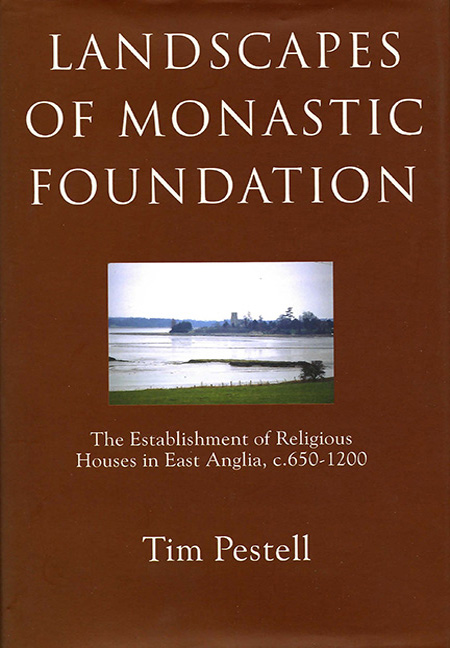Book contents
- Frontmatter
- Contents
- List of illustrations
- Acknowledgements
- Abbreviations
- 1 Introduction: Past and Present Approaches to Monastic Studies
- 2 Monasticism in Middle Anglo-Saxon East Anglia
- 3 The First Viking Age and its Consequences for Monasticism in East Anglia
- 4 Monastic Reform and Religious Life in the Later Anglo-Saxon Period
- 5 The Establishment of Monasteries in the Norman Landscape
- 6 Conclusions
- Bibliography
- Index
2 - Monasticism in Middle Anglo-Saxon East Anglia
Published online by Cambridge University Press: 11 May 2017
- Frontmatter
- Contents
- List of illustrations
- Acknowledgements
- Abbreviations
- 1 Introduction: Past and Present Approaches to Monastic Studies
- 2 Monasticism in Middle Anglo-Saxon East Anglia
- 3 The First Viking Age and its Consequences for Monasticism in East Anglia
- 4 Monastic Reform and Religious Life in the Later Anglo-Saxon Period
- 5 The Establishment of Monasteries in the Norman Landscape
- 6 Conclusions
- Bibliography
- Index
Summary
Anglo-saxon England's earliest monasteries are today known principally through documentary sources. As a result, their location, the type of communities they contained, and the ways in which they operated have been left at the mercy of the surviving source material, of which Bede's Historia Ecclesiastica Gentis Anglorum, written c.731, has long been fundamentally important. Against this background, archaeology has tried to develop our knowledge of these sites, initially through the recovery of ground-plans and finds as at Whitby, but increasingly by attempting to characterise ‘monastic’ archaeological assemblages and topographical characteristics, to create models applicable to other, undocumented, sites.
Despite intensive research that has undoubtedly advanced the field, many questions remain about the various types of institutions within the Church, consisting of episcopal sees, monasteries, hermitages and chapels. Unsurprisingly, differences in emphasis have been expressed and as a flurry of recent review articles has demonstrated there is, as yet, still no consensus of opinion on exactly what model of the early Anglo-Saxon Church best fits our available evidence.
This chapter will review a number of the paradigms that have been presented by scholars for the early Church's institutions, and will analyse their applicability to East Anglia. Such a study is long overdue for a region with a rich archaeological tradition stemming from its well-established county societies, archaeological units, central museums, and number of important relevant research projects. The principal reason is almost certainly East Anglia's extremely sparse documentary evidence. With the exception of a few scraps, historical sources are almost non-existent until the eleventh century. Archaeologically, however, East Anglia has much to commend its study. The large amount of arable agricultural land in the region has allowed extensive programmes of fieldwalking and aerial photography, while a positive attitude to metal-detecting by regional archaeologists and museum staff has led to a wealth of information being recorded in the county-based Sites and Monuments Records (SMRs). Finally, and perhaps most important, the robust Ipswich ware pottery in widespread use in East Anglia in this period is both distinctive and survives well in ploughsoil, allowing the identification and dating of settlements. This archaeological background, and East Anglia's ready geographical and political identity (Fig. 4), have made the region central to model-building to hypothesise the nature of early Anglo-Saxon kingdoms and kingship.
- Type
- Chapter
- Information
- Landscapes of Monastic FoundationThe Establishment of Religious Houses in East Anglia, c.650–1200, pp. 18 - 64Publisher: Boydell & BrewerPrint publication year: 2004

